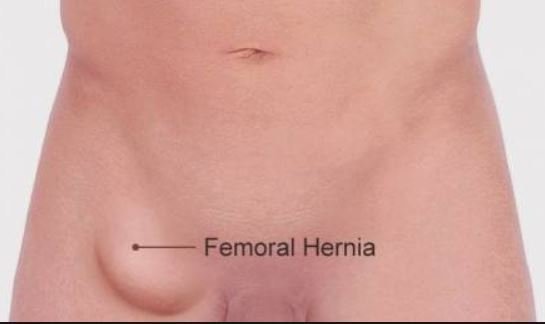

Lumps on the groin, whether soft or hard, big or small painful or painless have many causes. They can affect both men and women. Let us look at the most common causes as well as some treatments.
The groin is the area between lower tummy and your upper thighs (where your upper thigh meets with your abdomen). It has numerous leg muscles, inguinal lymph nodes, and the inguinal and femoral canal.

Groin lumps
Like any other part of the body, it is possible to have lumps on your groin which have several causes. Since they have different causes, these lumps have the following characteristics:
Different causes will form lumps on certain characteristics which will mention while looking at their causes.
There are numerous causes of lumps on the groin, here are the most common causes:
Skin infections
Boils or abscesses are the most common type of lumps resulting from skin infections that can occur anywhere in the body including the groin.
Trauma from shaving, rubbing or friction with underwear often cause skin injury that will open a gateway for entry of germs and consequently cause these lumps.
The resultant lumps will vary in size and severity ranging from a small to medium slightly painful pimple-like bumps to very large and painful abscess.
Swollen lymph glands (lymphadenitis)
Lymph glands form part of the immune system and they help in fighting various body infections. In most cases, it is almost impossible to feel them. However, if they are swollen you can feel them as a lump or a collection of lumps.
Infections in the groin area would make the lymph glands to swell. These include sexually transmitted infections (STIs). Also, the glands can also swell because of infections that affect the all body system such as chickenpox, flu or glandular fever.
Swollen lymph nodes due to infections will resolve after the infection has disappeared.
Enlarged blood vessels
Sometimes a vein in the groin area may become swollen, and it will feel like lumps. The swollen veins are known as varicose veins and they occur when the valve in the saphenous vein fails to open effectively to allow blood flow through.
This condition is also referred to as saphena varix. It is due to a venous deficiency which occurs due to many reasons.
Hernias
A hernia occurs when internal body parts pushes through a weakness in the surrounding muscle or tissue wall. They usually feel like a large and soft lump. Hernias are very common in the groin area.
In some cases, a hernia would go away when you lie, however, “if the tissue inside a hernia gets stuck, it can be hard and painful. If this occurs, you should see a doctor urgently,” notes Patient.info.
Sexually transmitted diseases
Some sexually transmitted infections such as syphilis, gonorrhea, herpes, chlamydia and HIV/AIDS can cause lumps in the groin area.
Firstly, they would lead to swollen lymph nodes. Secondly, certain STIs can also lead to the appearance of a single or a cluster of lumps that would break to form open sores. This would make either sitting or walking very painful.
You need a medical professional treat and heal the STIs.
Acne or pimples
Acne or pimples can also be blamed for the lumps on this area. They occur when the hair follicles are clogged with sebum and the dead skin cells.
When the clog is not infected, you will have small bumps (whiteheads and blackheads) – mild acne. However, if the clogs are infected, you can end up with bumps that vary in size from a small pimple to pustules, nodules, and cysts that can be very large.
In addition, besides inflammation, they can be itchy or painful. Although mild cases of acne can be treated at home, severe acne may require help from your dermatologist.
Groin cancer
Cancer is another common cause. The common type of cancer lump on the groin is the lymphoma or cancer of the lymph system.
Cancer of the lymph can also come with other symptoms such as inflammation among others. This is a serious health condition that needs early diagnosis and treatment to heal it.
Other causes
Other causes include the following:
Having looked at the most common causes, let us look at a few characteristics of the lumps you may have on your groin and their possible triggers.
A lump in the groin can be small or large depending on the causes. A small one would still grow and become larger. In fact, in most cases, they usually begin as pea-sized bumps that later grow to huge lumps.
However, not all small lumps would grow big, some would maintain their size. Those from allergic reactions, acne, STDs or cysts are usually small. Most of the causes we have discussed can also lead to small ones.
It is advisable not to judge their severity by just considering the size. You should visit your doctor to rule whether it is or not due to a serious health issue.
These ones can area can affect both females and males. Possible causes include inflamed lymph nodes or a hernia. Besides being hard, they can be painful, cause inflammation and be itchy.
Let your GP help you in knowing their exact causes.
Most of the causes we have seen can cause lumps on the groin areas of both male and female. The characteristics will depend on what causes them.
However, testicles and inguinal hernia are conditions that only cause groin lump in males whereas, a femoral hernia causes them female.
Finally, pregnant women tend to be prone to body lumps including the groin area. This is due to the hormonal imbalance that could interfere with body metabolic activities.
Of course, before any treatment, you will need a diagnosis to establish the cause. The doctor would ask you questions and then physically examine the bumps. In some cases, the diagnosis would end there.
However, in some cases, an ultrasounds scan would be required to get more information about the lump. The scan, for instance, would help the doctor to determine the type of a hernia if this is the cause in your case.
Blood and urine test would also be carried out to ascertain the type of infection or if the diabetes is the underlying condition. On the same note, a sample of the lump can also be taken to the laboratory for further analysis, this is called a biopsy. Biopsies are important in ruling out if cancer is the cause.
The various treatments. The choice of treatment will depend on the cause as well as the severity of the resultant symptoms.
The treatments range from home remedies to over the counter products to prescribed medications. Let us see some of the common treatments.
Home remedies are only used for mild groin lumps whose cause is known or to minimize the resultant symptoms. Furthermore, should symptoms persist, it is advisable that you seek medical attention from your healthcare provider immediately?
The following are the various home remedies for the treatment you can give a try:
Warm compresses may help to reduce the inflammations. This also relieves the pain that accompanies the inflammations.
Dip a clean towel in a hot water and apply it to the affected area. Make sure that the damp towel is not too hot to burn your skin!
For instance, gently massage the lymph nodes if they are swollen. When you massage the lymph nodes, you reduce the lump. This aids the lymph nodes to resume their normal functioning.
The saline compresses are applied in cases where the lumps have sores. Salt helps to disinfect the sores as well as drying up the wounds. It speeds up the healing process.
There are over the counter medications that can help deal with some symptoms. Some them will help reduce inflammation and pain. You can use ibuprofen, naproxen, and aspirin after consulting with your doctor.
Also, some drugs such as acetaminophen products available over-the-counter can only help to relieve pain caused by lump in the groin. See your GP is the bumps persist despite the application of OTC products.
There is no general treatment for all lumps. Treatment option depends on the underlying causes. Upon successful diagnosis, your doctor would have many options for treatments to prescribe. This would also depend on the severity.
The dermatologist, for instance, would prescribe oral or topical antibiotics, steroids or biotherapy. He/she may also find it necessary to recommend surgical procedures to get rid of the very stubborn lumps i.e. those due to deep cysts or severe varicose veins.
It is advisable to see a doctor if you have an unexplained lump which does not heal on its own after a week or two weeks or if the home remedy does not help.
Also, see a physician as soon as possible if yours seems to be getting bigger and worsens. You need also to see a GP if the groin lumps are accompanied by fever, itchiness all over the body or when they are very painful.